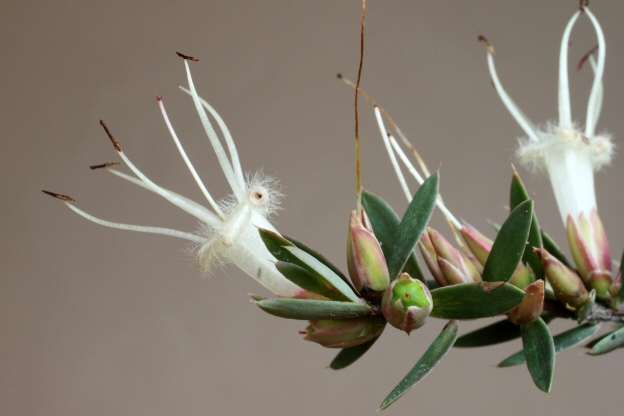
Styphelia adscendens, Nangwarry, SE. Photo: P.J.Lang
Results of molecular phylogenetic studies (Crayn, Hislop & Puente-Lelièvre 2020) have recently been applied to the SA Plant Census, affecting six native species of heath in this State. Five of the South Australian Leucopogon species, along with Astroloma humifusum, have been transferred to an expanded Styphelia. As a result, Astroloma has effectively been dismembered; the only other SA species, A. conostephioides (Flame Heath) was recently transferred to Stenanthera conostephioides.
The Australian or southern heaths have traditionally been placed in their own family, Epacridaceae. However, the most recent treatments now incorporate them as a subfamily, Epacridoideae, within the globally widespread family Ericaceae, which includes well known plants such as Heather (Calluna) in Europe and Erica in South Africa. The phylogeny of the largest tribe of the subfamily, Stypheliae, was studied by Puente-Lelièvre et al. (2015), using both nuclear and chloroplast DNA and showed that Styphelia, Leucopogon, Astroloma and other genera represented in the largest clade were not monophyletic as currently defined.
Faced with the choice of recognising a single large genus, or at least 12 smaller genera, the authors opted for the former and expanded the circumscription of Styphelia to include all of the taxa falling within the Styphelia-Astroloma clade. While the redefined Styphelia is less informative about the morphological diversity present in the clade, it involved fewer name changes, and priority was given to maximising nomenclatural stability.
Styphelia has been defined in various ways in its long and chequered history. It is noteworthy that none of the ‘new’ names for South Australia are actually new combinations – all had been treated as species of Styphelia at some time in the past by various authors. This can be seen in the listing of synonyms under Leucopogon and Astroloma in the Census. It demonstrates past difficulties of defining the genus in a robust way based on morphology alone, when weighting different characters gives different outcomes and the derivation of character states and homologies are not obvious.
As most recently understood, Styphelia was only represented by two species in SA, S. adscendens and S. exarrhena, characterised by their much-exserted stamens (see first two figures). However, in the phylogenies from the recent molecular studies a number of Leucopogon species cluster together with these, and the circumscription of the newly defined genus is now expanded by the addition of other species with shorter stamens, as shown in the following images.
The two pre-existing SA Styphelia species, showing exserted stamens: Styphelia adscendens (image above) and S. exarrhena (below).

Styphelia exarrhena, Cox Scrub CP, SL (BSOP-520). Photo: P.J.Lang.
The five new species of Styphelia, which were transferred from Leucopogon: Styphelia clelandii, S. cordifolia, S. ericoides, S. rufa and S. woodsii.
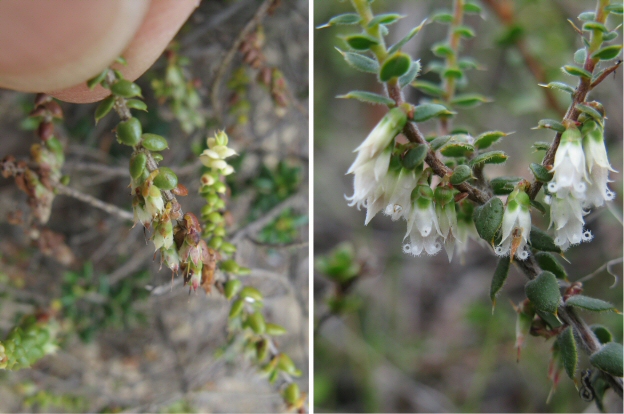
Styphelia clelandii (formerly Leucopogon clelandii): (LHS) Hardy Reserve, SE. Photo: A. Carle. (RHS) Ngarkat CP, SE. Photo: G. Carle.
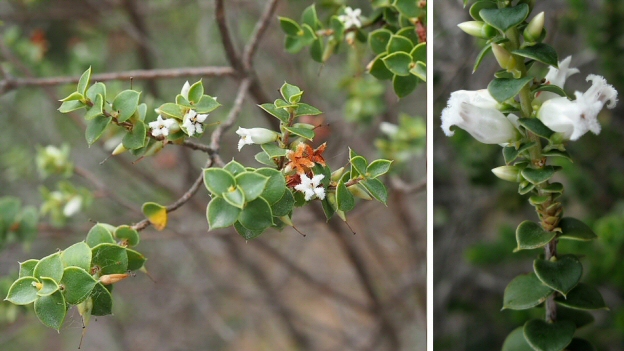
Styphelia cordifolia (formerly Leucopogon cordifolius): (LHS) Talbot Reserve, MU. Photo: SA Seed Centre. (RHS) Scorpion Springs Track, SE. Photo: G. Carle.
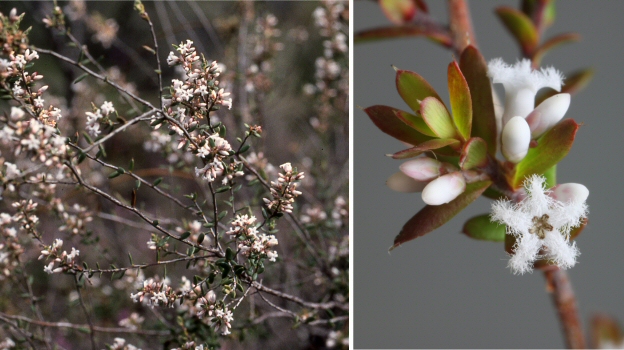
Styphelia ericoides (formerly Leucopogon ericoides): (LHS) Penola CP, SE (DEM 7622). Photo: D.E. Murfet. (RHS) near Bangham Siding Rd, SE (PJL 2789). Photo: P.J. Lang.
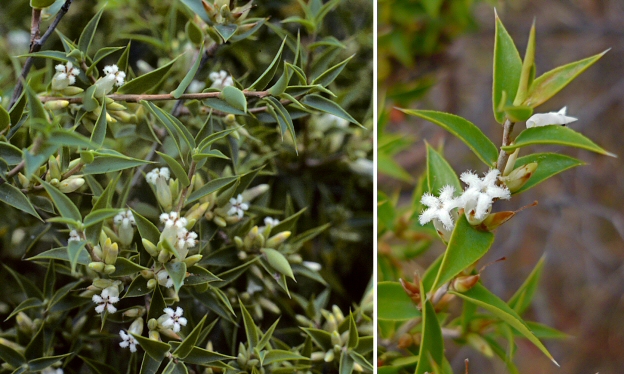
Styphelia rufa (formerly Leucopogon rufus): (LHS) Port Willunga, SL (DNK 622). Photo: D.N. Kraehenbuehl. (RHS) Aldinga Scrub CP, SL. Photo: J. Burgher.
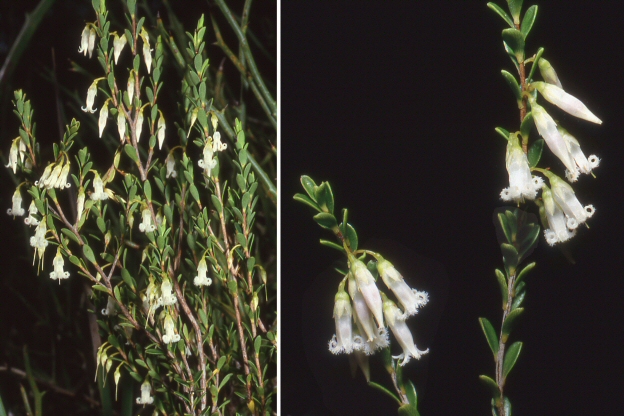
Styphelia woodsii (formerly Leucopogon woodsii), Bullock Hill CP, SL. Photo: D.E. Murfet, (LHS) DEM 2630, (RHS) DEM 2700.
The former Astroloma humifusum, now Styphelia humifusa:
That this plant appears so different to the others can be related to its long floral tube and red colouration being adaptions for pollination by birds rather than insects.
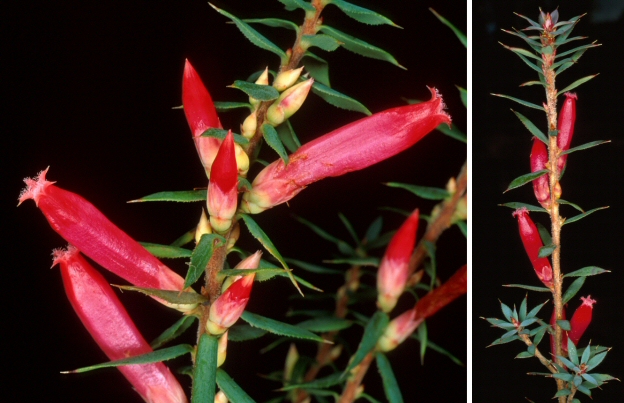
Styphelia humifusa (formerly Astroloma humifusum), The Bluff Range NFR, NL (BSOP-522). Photo: P.J. Lang.
Prepared by State Herbarium botanist Peter Lang.




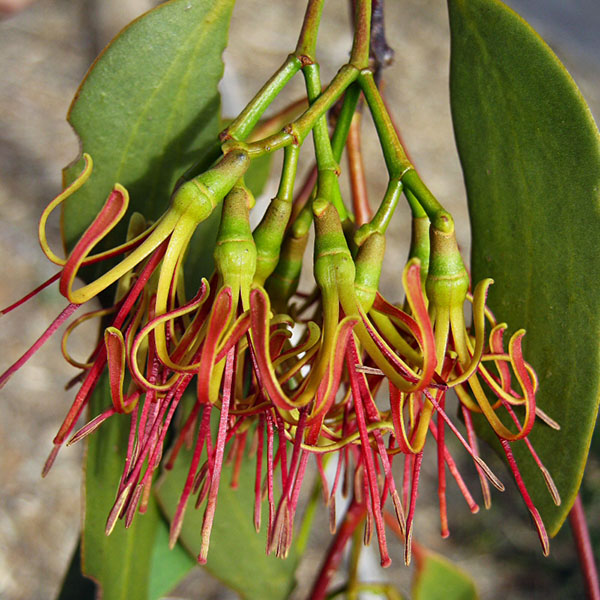








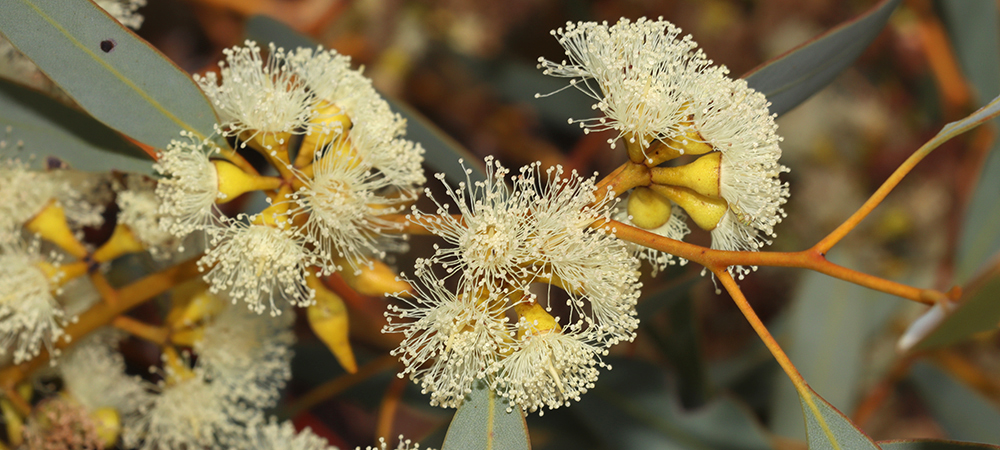
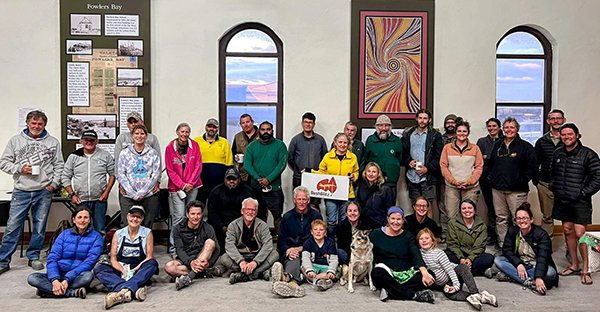
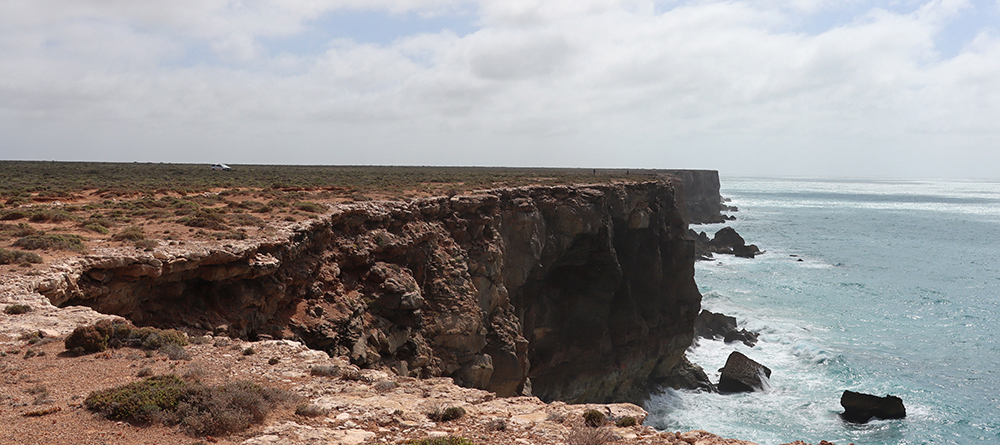



You must be logged in to post a comment.